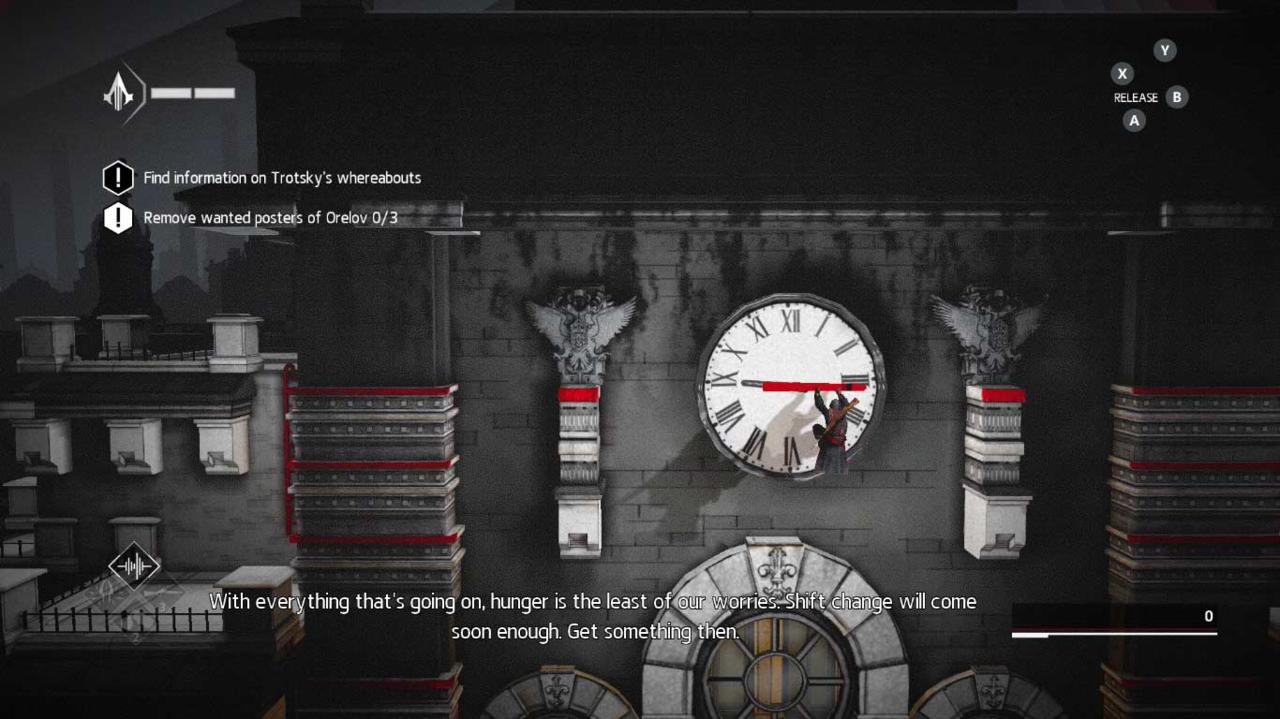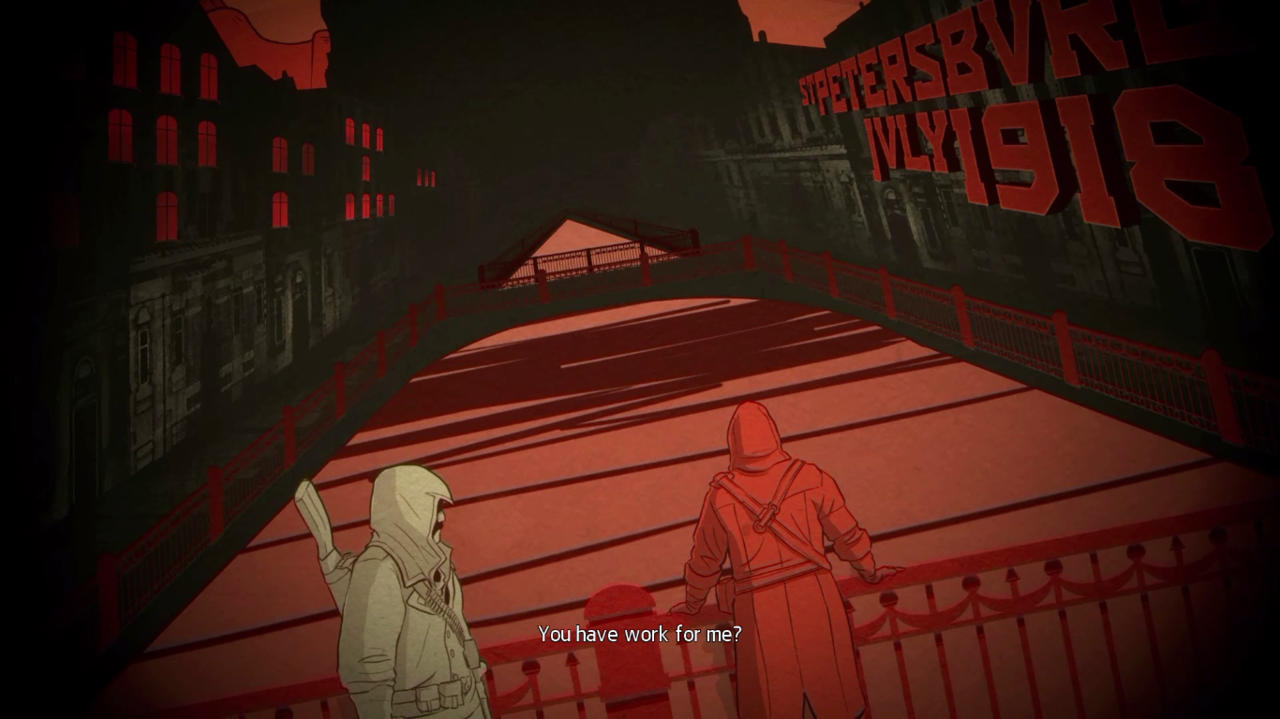With Assassin’s Creed taking the rest 2016 off after the release of Chronicles: Russia, one wouldn’t be blamed for hoping the final chapter of the mini-series’ life might be one of urgency or gratifying finality. Instead it's one of nonplussed lethargy. The final entry of Assassin’s Creed Chronicles is inert in ways China and India were not.
Our hero this time around is Orelov, a Russian assassin on a job at the turn of the 20th century. He's charged with recovering the Precursor box, a key item from the previous two Chronicles games. In the middle of his duties, sneaking into and rummaging through the royal palace for the box, he just so happens to run into one of the more legendary touchstones of Russian history: the execution of Czar Nicholas II and his family at the hands of the Bolsheviks. Legend has it the youngest daughter, Anastasia, escaped the massacre somehow. Assassin’s Creed takes things a step further. Not only does Orelov smuggle the frightened princess out of the palace after running into her during his own escape, but Anastasia discovers that she might have a little bit of Assassin in her.

Like many of the best plot contrivances in the Chronicles series, the game has a prime setup here in tying the legend of Anastasia to the game’s lore, but ultimately fails to capitalize. What’s particularly damaging here is that it drags China’s protagonist, Shao Jun, down with it. Anastasia doesn’t come across her power naturally, it’s a latent possession by the unexpectedly angry ghost of Shao Jun, who has awakened by contact with the Precursor box. As a result, the game does little to develop the character of Anastasia, and makes Shao Jun a petty murderer in the process. On the flipside, Orelov is stuck in “protect the princess” mode for the entire game, and never develops either. Storywise, the whole thing is a wash.
If nothing else, the gameplay benefits from Anastasia being able to fend for herself. While ACC: China and India had only the single assassin protagonist, Russia splits its time between Anastasia and Orelov. Anastasia can’t get into straight up hand-to-hand fights, but she is able to use the Helix Powers from the previous game, allowing her to vanish into thin air for short periods, invisibly dash between hiding spots, and disappear corpses she leaves behind. Orelov can't employ any of these powers but can engage enemies head on--though his fighting style is a bit more stiff and unwieldy--and access to a veritable Batman utility belt. He has smoke bombs and a rifle to pick enemies off from afar. He also has a grappling hook to pull obstacles down, which can be used to latch onto electronics and send a pulse to knock it out.

Ironically, bringing this style of gameplay into the modern age seems to have watered it down. Despite a few new devious obstacles and perils to traverse--the presence of phones, pistols, and automobiles for starters--there are few surprises to be found. Running, jumping, and hiding from vision cones are all competent on a base level, but China had novelty on its side, while India doubled down on pure parkour and platforming. Russia seems confident that splitting the abilities of a single assassin into two characters would keep things fresh, but this doesn't work in its favor.
It doesn’t help that both China and India, at their most mundane, at least had captivating presentations. China had its watercolors, India had its henna art. Russia’s art style succeeds in small doses, taking its cue from the utilitarian blocky propaganda of its time period, but the muted grays and reds create an oppressive atmosphere that starts to wear on you as time goes on.
Russia seems confident that splitting the abilities of a single assassin into two characters would keep things fresh, but this doesn't work in its favor.
That art style is ultimately indicative of the problems with the series, in that, even at its most colorful or active, it falls flat. We’re given few reasons to care about the story or characters, and gameplay doesn’t escalate in a way that make sticking around for the complete three-game journey worthwhile. Newcomers may still find fleeting joy in one of the games for being a bite sized portion of Prince of Persia-style journeys through an exotic land. But the idea of sticking around for seconds or thirds has been proven to be a fool’s errand, and that single portion turning out to be Russia would give a lackluster impression of the rest. Chronicles ends not with a bang or a whimper, but a shrug.









